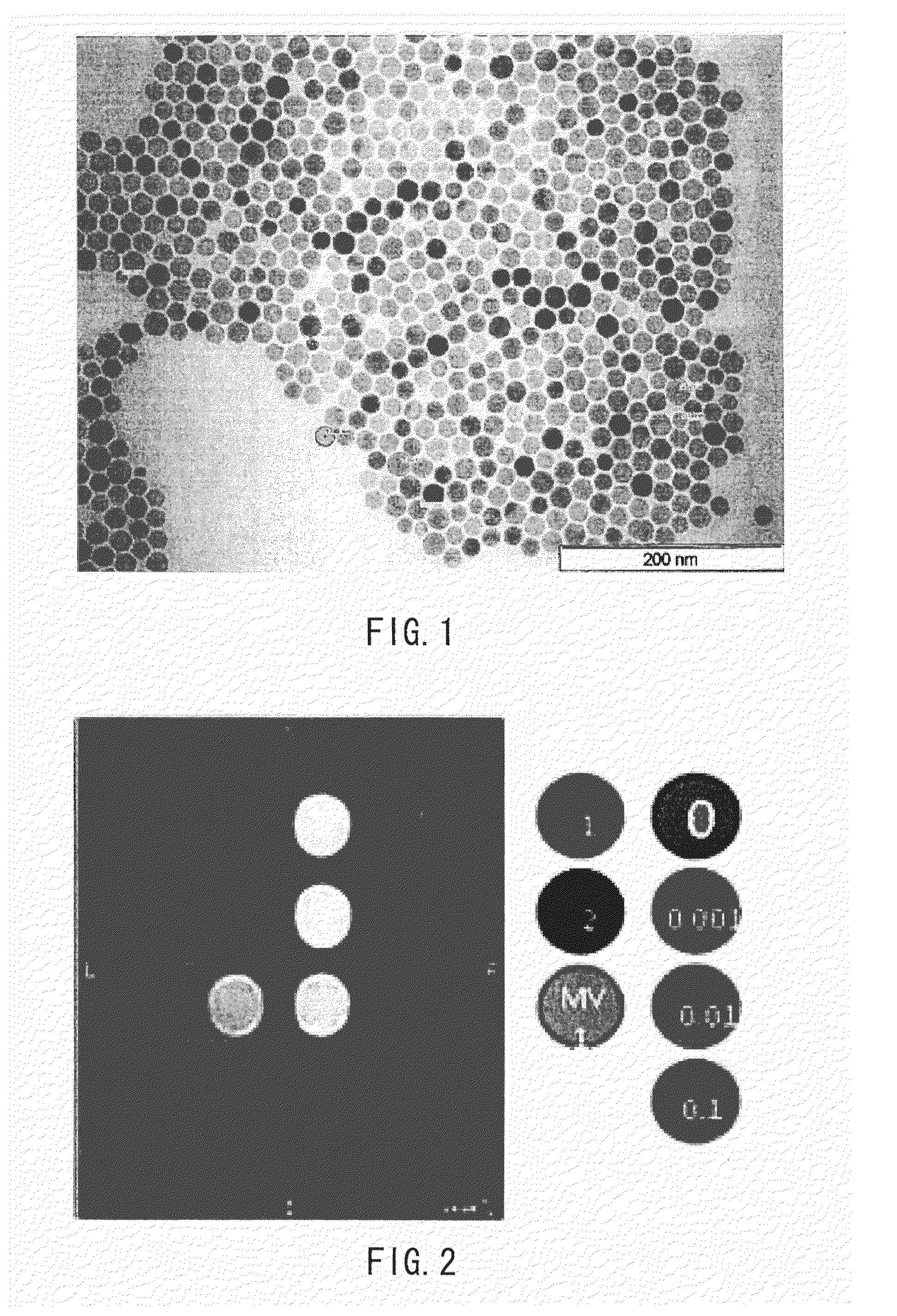MRI contrast agent containing composite particles
a contrast agent and composite particle technology, applied in the field of mri contrast agent containing composite particle, can solve the problems of pharmacokinetic problems of conventional gadolinium preparations and iron preparations, and achieve the effects of high relaxation level, enhanced permeability and retention effect, and high dispersion stability
- Summary
- Abstract
- Description
- Claims
- Application Information
AI Technical Summary
Benefits of technology
Problems solved by technology
Method used
Image
Examples
examples
Production Example of Composite Particles (with Microparticles being Iron Oxide Nanoparticles
[0052](1) Synthesis of a Coupling Agent Containing a Polymerization Initiating Group, (2-bromo-2-methyl)propionyloxypropyltriethoxysilane (BPE)
[0053]Synthesis of BPE was performed by a two-step reaction. As a first step, a mixed solution containing allyl alcohol (170 g), triethylamine (237 g), and dichloromethane (2 L) was cooled in ice and then 2-bromoisobutyryl bromide (450 g) was dripped therein. After that, the reaction solution was stirred at 0° C. for three hours and was further stirred at room temperature for ten hours. The reaction solution was concentrated, THF was added thereto, and thereby salts were allowed to precipitate and were then filtrated. After the filtrate was concentrated, the resultant was then diluted with chloroform (1 L). This was then washed with a 1N hydrochloric acid aqueous solution (2×1 L), a saturated sodium bicarbonate aqueous solution (2×1 L), and pure water...
PUM
| Property | Measurement | Unit |
|---|---|---|
| Fraction | aaaaa | aaaaa |
| Fraction | aaaaa | aaaaa |
| Fraction | aaaaa | aaaaa |
Abstract
Description
Claims
Application Information
 Login to View More
Login to View More - R&D
- Intellectual Property
- Life Sciences
- Materials
- Tech Scout
- Unparalleled Data Quality
- Higher Quality Content
- 60% Fewer Hallucinations
Browse by: Latest US Patents, China's latest patents, Technical Efficacy Thesaurus, Application Domain, Technology Topic, Popular Technical Reports.
© 2025 PatSnap. All rights reserved.Legal|Privacy policy|Modern Slavery Act Transparency Statement|Sitemap|About US| Contact US: help@patsnap.com



